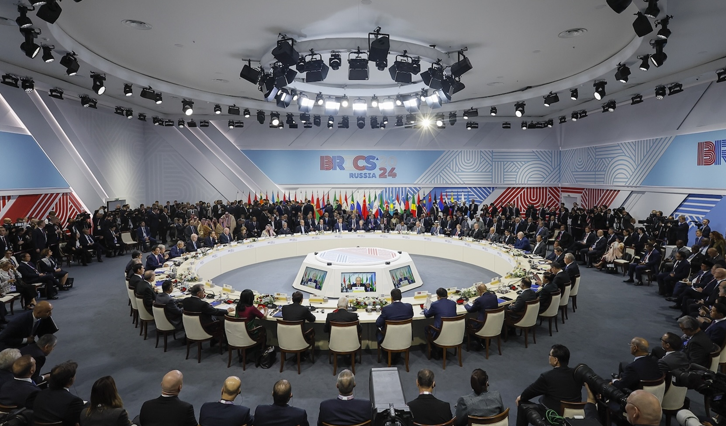As the BRICS group prepares for its July 2025 summit in Brazil, a new map of global alignment is emerging—one driven not by military alliances or ideology, but by a push for new partnerships in pursuit of multilateralism, trade and development. Over the past two years, BRICS has significantly expanded its list of members and partners as countries pursue new economic opportunities, political influence and greater resilience amid the increasing use of sanctions as a foreign policy tool and stalled global institutional reforms. Now, with Washington further retreating from key international institutions and U.S. tariffs unsettling global markets, BRICS has moved into the global spotlight, positioning itself as the new champion of multilateralism.
From its outset, BRICS has stood on two pillars: the determination to chart an independent course and the drive to invest in new international institutions. Frustrated by stalled reforms at the World Bank and International Monetary Fund promised in the aftermath of the global financial crisis, the group committed to creating its own financial frameworks. Since 2014, when it launched the New Development Bank and the West imposed sanctions on Russia, BRICS has rapidly expanded its institutional capacity and policy coordination. Despite internal differences, it remains united in rejecting external economic coercion and advancing currency diversification to enhance its members’ economic sovereignty.
BRICS already committed to deeper financial cooperation at the bloc’s 2024 summit in Kazan, Russia, creating a cross-border settlement system and strengthening banking and financial markets infrastructure. The 2024 summit also tasked BRICS finance officials with considering and reporting on the use of local currencies, payment instruments and settlement platforms. These efforts, coupled with deeper engagement with BRICS+ countries and realignment of supply chains, further help reduce reliance on the dollar.
This agenda has gained renewed attention since U.S. President Donald Trump’s recent threat to impose 100 percent tariffs on the BRICS countries if they seek to further advance de-dollarization. In response, Brazilian President Luiz Inacio Lula da Silva reaffirmed the group’s commitment to developing independent payment platforms. Yet, as Brazilian Central Bank director Nilton David cautioned, BRICS currently lacks the asset base to challenge the dollar, and it may take a decade to build the necessary market capacity to do so.
Similar momentum is also shaping BRICS’ trade agenda. The Trump administration’s retreat from global agreements, especially on trade, has galvanized BRICS to fill the void. In May 2025, BRICS trade ministers adopted a declaration calling for strengthening the multilateral trading system, while also raising concerns about trade-distorting measures and outlining three shared priorities: World Trade Organization, or WTO, reform; renewal of the BRICS 2030 Economic Partnership Strategy; and development of the digital economy. This policy acceleration builds on BRICS’ membership expansions, which strategically brought in key trade partners to deepen trade within and beyond the bloc, and the 2024 launch of an informal consultative framework that created a platform for coordinating BRICS positions within the WTO.


